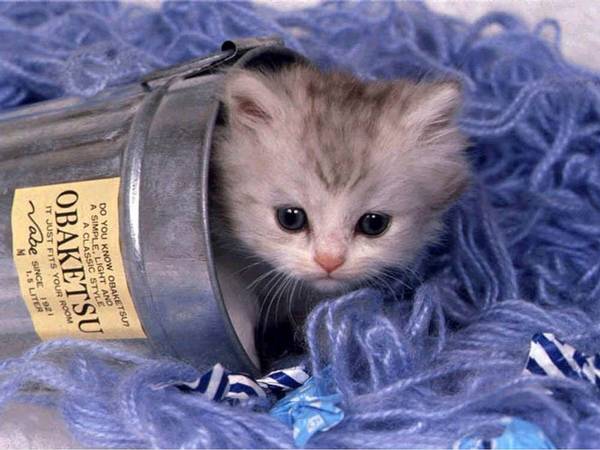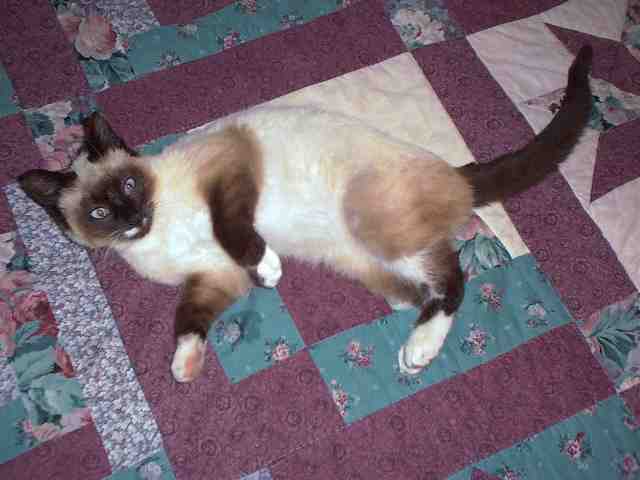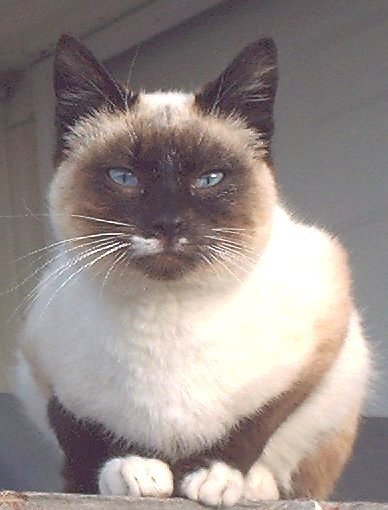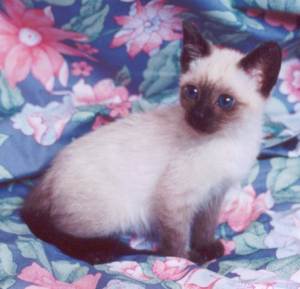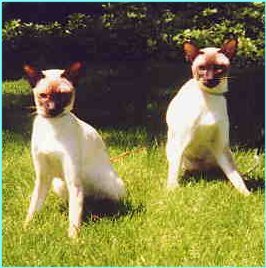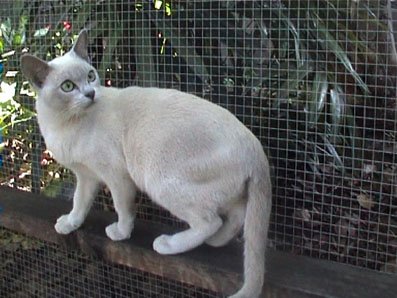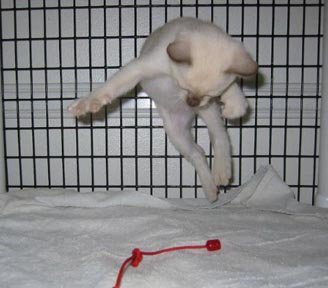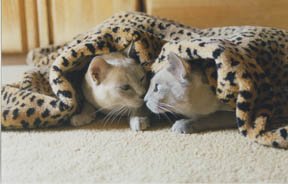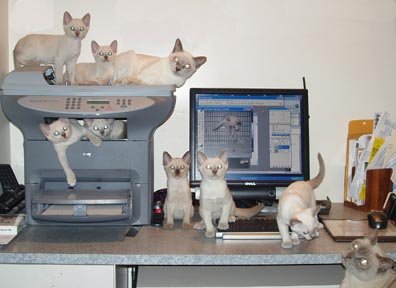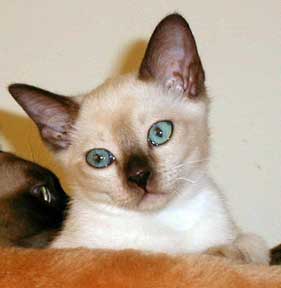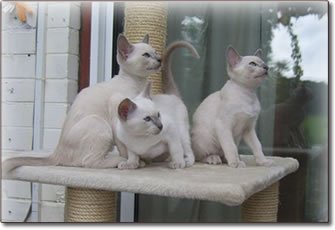Re: Kitty & Tania's Animal Thread
Cats breed
Part XVII Breed profile :Siamese 
Origin :
Siamese have fascinated folks around the world since they were first officially exported from Thailand, or as it was known then Siam, in the late eighteen hundreds. Their sleek lines, striking color contrast, finely chiseled aristocratic heads, deep blue almond eyes, and short silky coats make them living art.
Appearance :
Body:
The Siamese is a study in length. From the start the breed standard has called for a long, wedge shaped head and elongated body lines. The muscular, tubular body is supported by long legs and graced by a long neck and tail.
The long Siamese head is delineated by an absolutely straight profile and well aligned chin. From the front, the outline of the face presents a smooth wedge with large ears that complete the wedge. The outstanding feature of the head is the pair of deep blue almond eyes (an eye’s width apart) which are set at a slant. If you have been able to resist all the other attributes of this breed, the eyes will captivate you. They radiate intelligence and emotion.
Coat:
Its a short silky coats
Coat patterns:
Seal points, still the best known variety, were the first to arrive. With their seal brown, almost black extremities and their pale fawn bodies, they were sensational. While chocolate points, with creamy white bodies and milk chocolate legs, tail, mask and ears did appear from time to time, it was the blue point that gained official recognition in 1934. The blue point has a bluish-white body with slate blue points. The chocolate point was recognized next. In 1955 the lilac point followed and completed the breed. The lilac point has pinkish gray points with a white body which makes it most ethereal and delicate in color.
Personality
This ancient breed, perhaps the oldest of all our cats, is able to communicate like no other. The Siamese voice is legendary. They speak both with their voice and with their body. They are the quintessential “people” cat, for they love to be in your lap, on your bed, at your table--and in your heart!
[/B]
Intelligence
They have an acute intelligence, inquisitive personality and a loving nature.
Siamese do not tolerate isolation (or being ignored) well; they want to be a part of their owners’ lives, as they hold firmly to the belief that they are man’s best friend. (They play fetch exceedingly well, and have the distinct virtue of returning the thrown object to your lap instead of your feet!) They are in one’s lap, on one’s newspaper, in one’s bed, and completely in one’s heart. There is no better companion cat than "The Royal Cat of Siam."
A famous author once said, "A rose is a rose is a rose." It is no stretch of the truth to paraphrase Gertrude Stein by affirming: "A Siamese is a Siamese is a Siamese."
Grooming
[/COLOR]
Brushing of the Siamese must be done sparingly, as too much brushing can damaged the color of the coat. One technique for removing loose hair is to dampen your hands and rub them backwards in the cat's coat.
Health
Usual
Source
Source
they smell like cigs
and they are shedding so MUCH. that lady isnt takin care of em
they look unhealthy too


